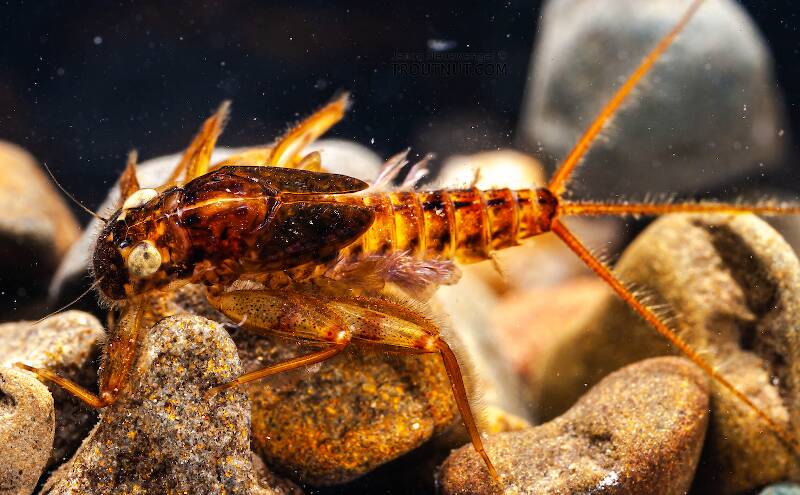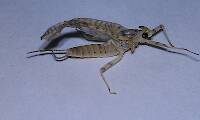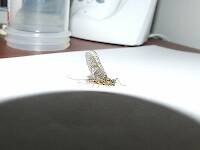
Blue-winged Olives
Baetis
Tiny Baetis mayflies are perhaps the most commonly encountered and imitated by anglers on all American trout streams due to their great abundance, widespread distribution, and trout-friendly emergence habits.
Featured on the forum


Troutnut is a project started in 2003 by salmonid ecologist Jason "Troutnut" Neuswanger to help anglers and
fly tyers unabashedly embrace the entomological side of the sport. Learn more about Troutnut or
support the project for an enhanced experience here.

This specimen seems to be of the same species as a dun I photographed which emerged from another nymph in the same sample.
Taxon on Jun 5, 2007June 5th, 2007, 9:52 am EDT
Maccaffertium is a Latinized version of the name of the world-renowned mayfly systematist, W. Patrick McCafferty. And, mediopunctatum is constructed from roots of medi- meaning middle, and punct- meaning point, so I assume this species has some distinctive feature midpoint in its anatomy. Assuming my logic is valid, perhaps someone else can tell you what the feature is.
The distribution of this species is confined to the states and provinces lying east of the N. American continental divide.
The distribution of this species is confined to the states and provinces lying east of the N. American continental divide.
Quillgordon on Jun 5, 2007June 5th, 2007, 11:37 am EDT
Taxon,
OK....... I understood the Maccaffertium, but didn't get the 'mediopunctatum' ending. I had two years of German, but no Latin.
This one has a mark down the center of its back( dorsal), maybe that has some relevenance. I don't recall that particular marking on my specimens, but they have those distinctive markings on the belly(ventral side). I find those markings very interesting.
John...
OK....... I understood the Maccaffertium, but didn't get the 'mediopunctatum' ending. I had two years of German, but no Latin.
This one has a mark down the center of its back( dorsal), maybe that has some relevenance. I don't recall that particular marking on my specimens, but they have those distinctive markings on the belly(ventral side). I find those markings very interesting.
John...
Flyfishing is a state of mind! .............. Q.g.
C/R........barbless
C/R........barbless
Quick Reply
Related Discussions
Topic
Replies
Last Reply
2
Jul 14, 2008
by Wiflyfisher
by Wiflyfisher
7
Apr 1, 2009
by Troutnut
by Troutnut
3
Sep 4, 2012
by Entoman
by Entoman





